所有示例代码,请见/下载于
https://github.com/Wasabi1234/concurrency


高并发处理的思路及手段
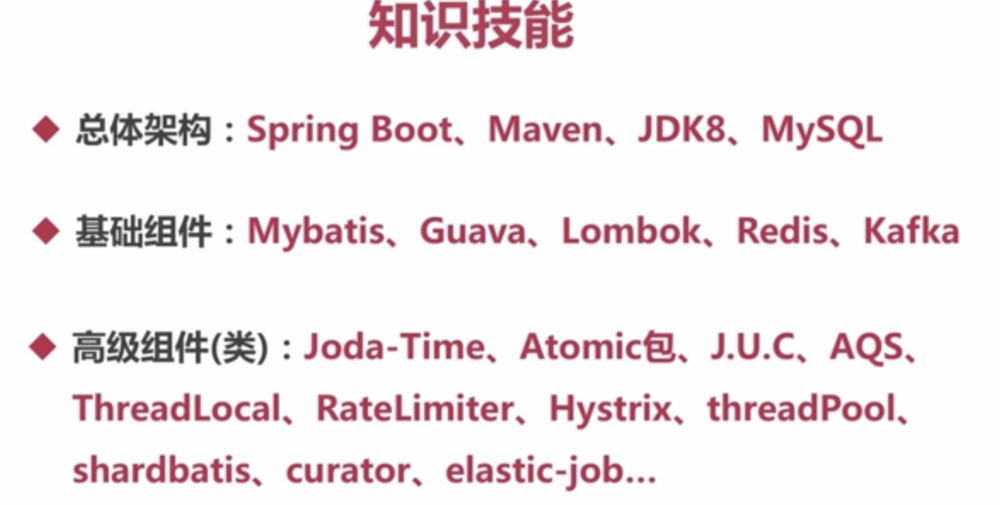
1 基本概念
1.1 并发
同时拥有两个或者多个线程,如果程序在单核处理器上运行多个线程将交替地换入或者换出内存,这些线程是同时“存在"的,每个线程都处于执行过程中的某个状态,如果运行在多核处理器上,此时,程序中的每个线程都将分配到一个处理器核上,因此可以同时运行.
1.2 高并发( High Concurrency)
互联网分布式系统架构设计中必须考虑的因素之一,通常是指,通过设计保证系统能够同时并行处理很多请求.
1.3 区别与联系
并发: 多个线程操作相同的资源,保证线程安全,合理使用资源
高并发:服务能同时处理很多请求,提高程序性能
2 CPU
2.1 CPU 多级缓存
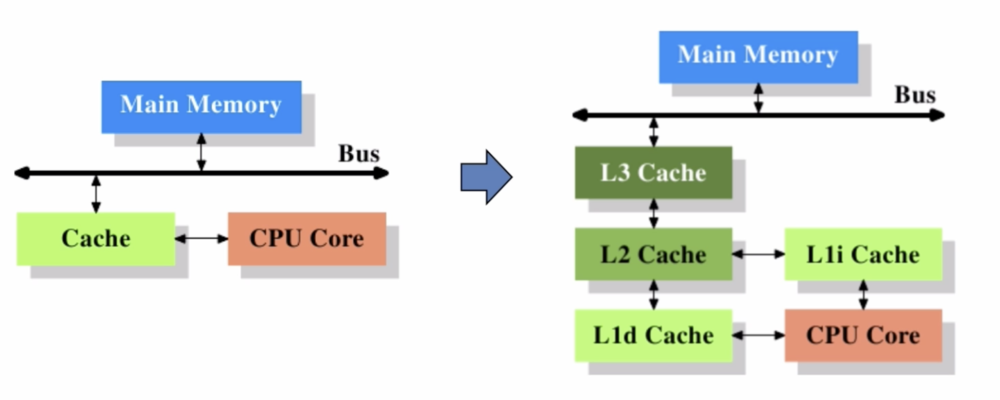
为什么需要CPU cache
CPU的频率太快了,快到主存跟不上
如此,在处理器时钟周期内,CPU常常需要等待主存,浪费资源。所以cache的出现,是为了缓解CPU和内存之间速度的不匹配问题(结构:cpu-> cache-> memory ).CPU cache的意义
时间局部性
如果某个数据被访问,那么在不久的将来它很可能被再次访问空间局部性
如果某个数据被访问,那么与它相邻的数据很快也可能被访问
2.2 缓存一致性(MESI)
用于保证多个 CPU cache 之间缓存共享数据的一致
M-modified被修改
该缓存行只被缓存在该 CPU 的缓存中,并且是被修改过的,与主存中数据是不一致的,需在未来某个时间点写回主存,该时间是允许在其他CPU 读取主存中相应的内存之前,当这里的值被写入主存之后,该缓存行状态变为 EE-exclusive独享
缓存行只被缓存在该 CPU 的缓存中,未被修改过,与主存中数据一致
可在任何时刻当被其他 CPU读取该内存时变成 S 态,被修改时变为 M态S-shared共享
该缓存行可被多个 CPU 缓存,与主存中数据一致I-invalid无效
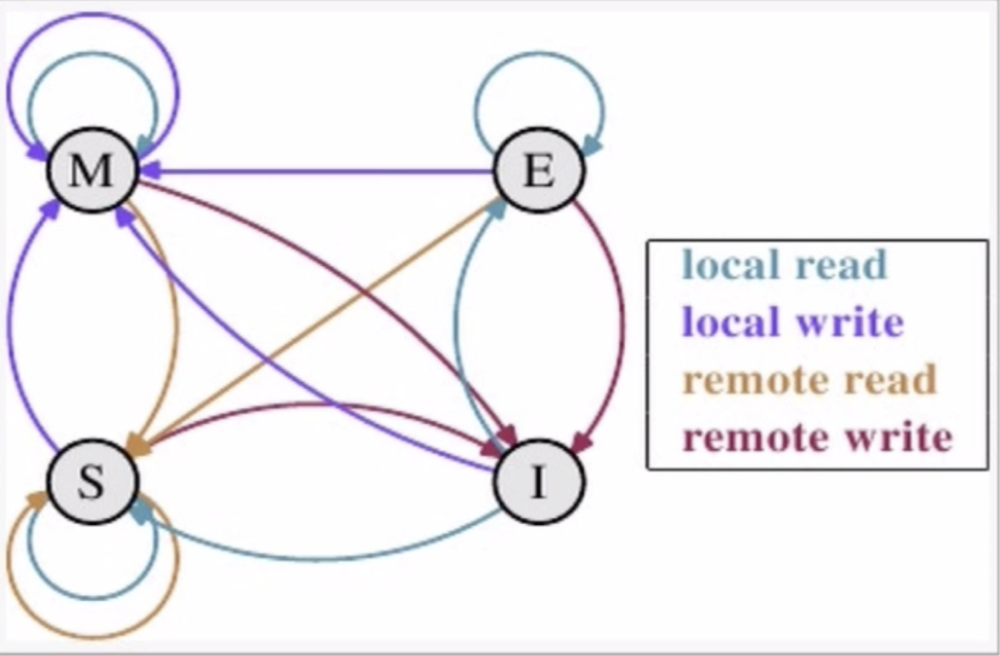
乱序执行优化
处理器为提高运算速度而做出违背代码原有顺序的优化
并发的优势与风险
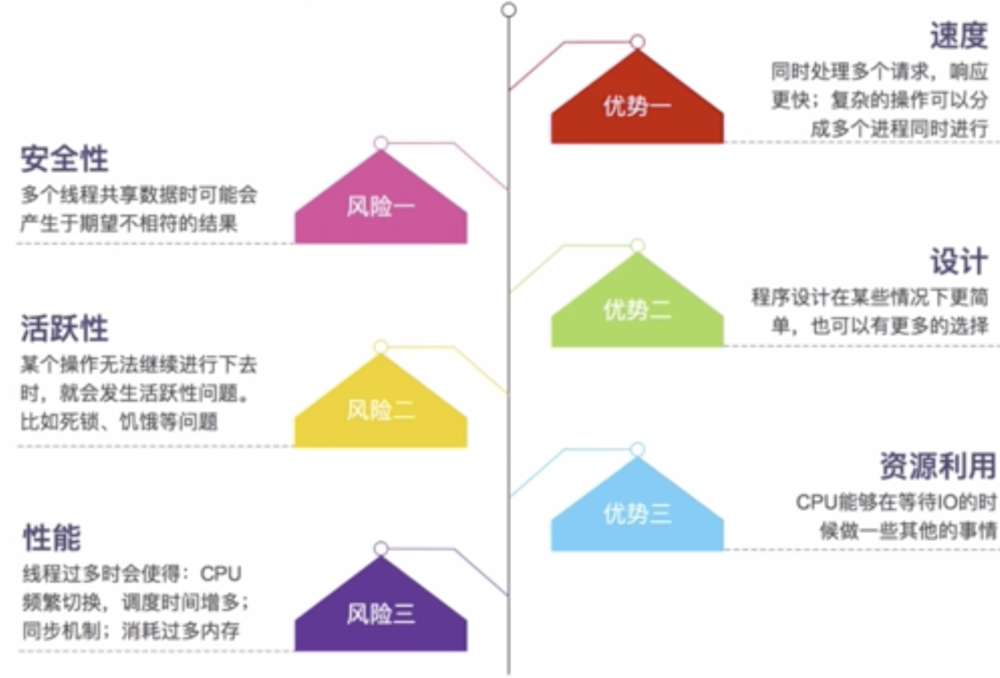
3 项目准备
3.1 项目初始化
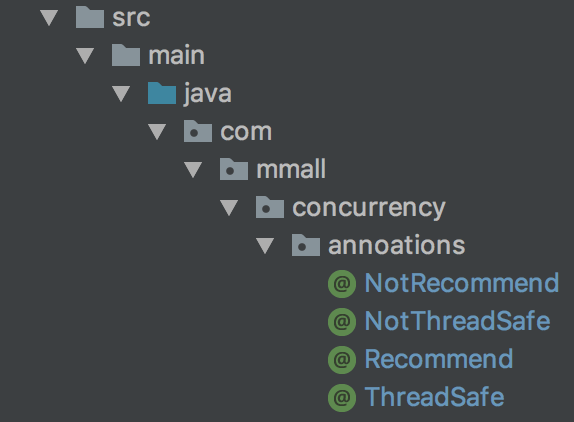
自定义4个基本注解
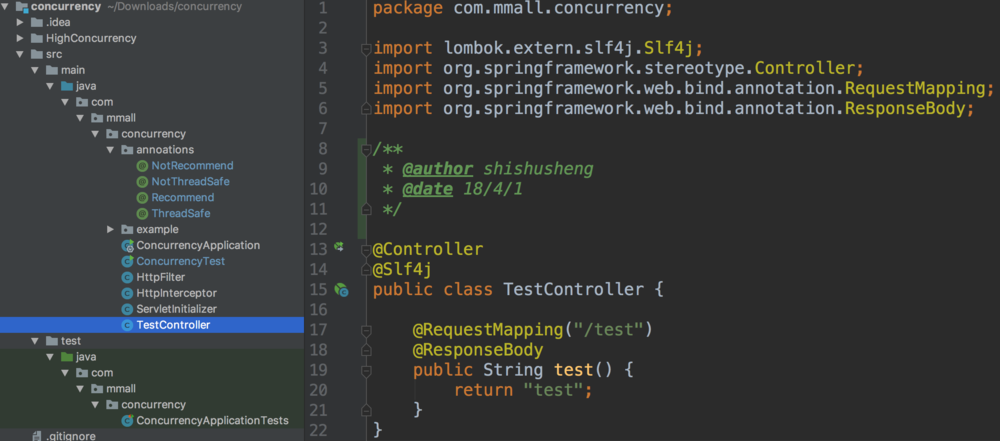
随手写个测试类

运行正常
3.2 并发模拟-Jmeter压测
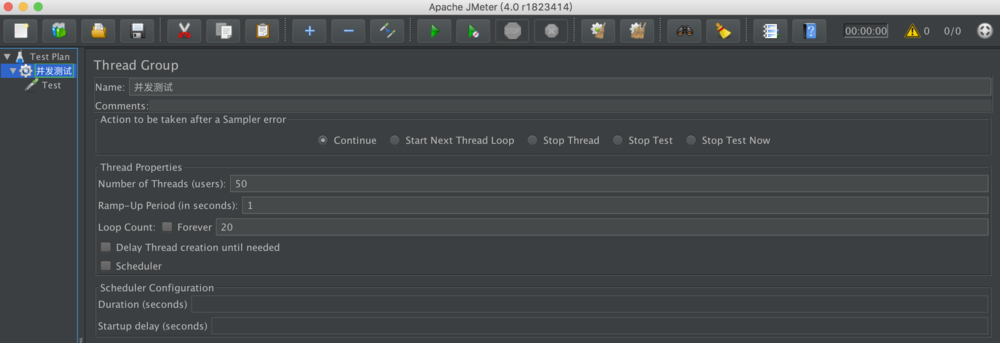


添加"查看结果数"和"图形结果"监听器

log view 下当前日志信息

图形结果
3.3 并发模拟-代码
CountDownLatch

可阻塞线程,并保证当满足特定条件时可继续执行
Semaphore(信号量)

可阻塞线程,控制同一时间段内的并发量
以上二者通常和线程池搭配
下面开始做并发模拟
package com.mmall.concurrency;import com.mmall.concurrency.annoations.NotThreadSafe;import lombok.extern.slf4j.Slf4j;import java.util.concurrent.CountDownLatch;import java.util.concurrent.ExecutorService;import java.util.concurrent.Executors;import java.util.concurrent.Semaphore;/**
* @author shishusheng
* @date 18/4/1
*/@Slf4j@NotThreadSafepublic class ConcurrencyTest { /**
* 请求总数
*/
public static int clientTotal = 5000; /**
* 同时并发执行的线程数
*/
public static int threadTotal = 200; public static int count = 0; public static void main(String[] args) throws Exception { //定义线程池
ExecutorService executorService = Executors.newCachedThreadPool(); //定义信号量,给出允许并发的线程数目
final Semaphore semaphore = new Semaphore(threadTotal); //统计计数结果
final CountDownLatch countDownLatch = new CountDownLatch(clientTotal); //将请求放入线程池
for (int i = 0; i < clientTotal ; i++) {
executorService.execute(() -> { try { //信号量的获取
semaphore.acquire();
add(); //释放
semaphore.release();
} catch (Exception e) {
log.error("exception", e);
}
countDownLatch.countDown();
});
}
countDownLatch.await(); //关闭线程池
executorService.shutdown();
log.info("count:{}", count);
} /**
* 统计方法
*/
private static void add() {
count++;
}
}运行发现结果随机,所以非线程安全
4线程安全性
4.1 线程安全性
当多个线程访问某个类时,不管运行时环境采用何种调度方式或者这些进程将如何交替执行,并且在主调代码中不需要任何额外的同步或协同,这个类都能表现出正确的行为,那么就称这个类是线程安全的
4.2 原子性
4.2.1 Atomic 包
AtomicXXX:CAS,Unsafe.compareAndSwapInt
提供了互斥访问,同一时刻只能有一个线程来对它进行操作
package com.mmall.concurrency.example.atomic;import com.mmall.concurrency.annoations.ThreadSafe;import lombok.extern.slf4j.Slf4j;import java.util.concurrent.CountDownLatch;import java.util.concurrent.ExecutorService;import java.util.concurrent.Executors;import java.util.concurrent.Semaphore;import java.util.concurrent.atomic.AtomicLong;/**
* @author shishusheng
*/@Slf4j
@ThreadSafepublic class AtomicExample2 {
/**
* 请求总数
*/
public static int clientTotal = 5000; /**
* 同时并发执行的线程数
*/
public static int threadTotal = 200; /**
* 工作内存
*/
public static AtomicLong count = new AtomicLong(0); public static void main(String[] args) throws Exception {
ExecutorService executorService = Executors.newCachedThreadPool();
final Semaphore semaphore = new Semaphore(threadTotal);
final CountDownLatch countDownLatch = new CountDownLatch(clientTotal); for (int i = 0; i < clientTotal ; i++) {
executorService.execute(() -> { try {
System.out.println();
semaphore.acquire();
add();
semaphore.release();
} catch (Exception e) { log.error("exception", e);
}
countDownLatch.countDown();
});
}
countDownLatch.await();
executorService.shutdown(); //主内存
log.info("count:{}", count.get());
}
private static void add() {
count.incrementAndGet(); // count.getAndIncrement();
}
}package com.mmall.concurrency.example.atomic;import com.mmall.concurrency.annoations.ThreadSafe;import lombok.extern.slf4j.Slf4j;import java.util.concurrent.atomic.AtomicReference;/**
* @author shishusheng
* @date 18/4/3
*/@Slf4j@ThreadSafepublic class AtomicExample4 { private static AtomicReference<Integer> count = new AtomicReference<>(0); public static void main(String[] args) { // 2
count.compareAndSet(0, 2); // no
count.compareAndSet(0, 1); // no
count.compareAndSet(1, 3); // 4
count.compareAndSet(2, 4); // no
count.compareAndSet(3, 5);
log.info("count:{}", count.get());
}
}
输出结果
AtomicReference,AtomicReferenceFieldUpdater

AtomicBoolean

AtomicStampReference : CAS的 ABA 问题
4.2.2 锁
synchronized:依赖 JVM
修饰代码块:大括号括起来的代码,作用于调用的对象
修饰方法: 整个方法,作用于调用的对象

修饰静态方法:整个静态方法,作用于所有对象

package com.mmall.concurrency.example.count;import com.mmall.concurrency.annoations.ThreadSafe;import lombok.extern.slf4j.Slf4j;import java.util.concurrent.CountDownLatch;import java.util.concurrent.ExecutorService;import java.util.concurrent.Executors;import java.util.concurrent.Semaphore;/**
* @author shishusheng
*/@Slf4j@ThreadSafepublic class CountExample3 { /**
* 请求总数
*/
public static int clientTotal = 5000; /**
* 同时并发执行的线程数
*/
public static int threadTotal = 200; public static int count = 0; public static void main(String[] args) throws Exception {
ExecutorService executorService = Executors.newCachedThreadPool(); final Semaphore semaphore = new Semaphore(threadTotal); final CountDownLatch countDownLatch = new CountDownLatch(clientTotal); for (int i = 0; i < clientTotal ; i++) {
executorService.execute(() -> { try {
semaphore.acquire();
add();
semaphore.release();
} catch (Exception e) {
log.error("exception", e);
}
countDownLatch.countDown();
});
}
countDownLatch.await();
executorService.shutdown();
log.info("count:{}", count);
} private synchronized static void add() {
count++;
}
}synchronized 修正计数类方法
修饰类:括号括起来的部分,作用于所有对象
子类继承父类的被 synchronized 修饰方法时,是没有 synchronized 修饰的!!!
Lock: 依赖特殊的 CPU 指令,代码实现
4.2.3 对比
synchronized: 不可中断锁,适合竞争不激烈,可读性好
Lock: 可中断锁,多样化同步,竞争激烈时能维持常态
Atomic: 竞争激烈时能维持常态,比Lock性能好; 只能同步一
个值
4.3 可见性
一个线程对主内存的修改可以及时的被其他线程观察到
4.3.1 导致共享变量在线程间不可见的原因
线程交叉执行
重排序结合线程交叉执行
共享变量更新后的值没有在工作内存与主存间及时更新
4.3.2 可见性之synchronized
JMM关于synchronized的规定
线程解锁前,必须把共享变量的最新值刷新到主内存
线程加锁时,将清空工作内存中共享变量的值,从而使
用共享变量时需要从主内存中重新读取最新的值(加锁与解锁是同一把锁)
4.3.3 可见性之volatile
通过加入内存屏障和禁止重排序优化来实现
对volatile变量写操作时,会在写操作后加入一条store
屏障指令,将本地内存中的共享变量值刷新到主内存对volatile变量读操作时,会在读操作前加入一条load
屏障指令,从主内存中读取共享变量
volatile 写

volatile 读

计数类之 volatile 版,非线程安全的
volatile使用
volatile boolean inited = false;//线程1:context = loadContext();
inited= true;// 线程2:while( !inited ){
sleep();
}
doSomethingWithConfig(context)4.4 有序性
一个线程观察其他线程中的指令执行顺序,由于指令重排序的存在,该观察结果一般杂乱无序
JMM允许编译器和处理器对指令进行重排序,但是重排序过程不会影响到单线程程序的执行,却会影响到多线程并发执行的正确性
4.4.1 happens-before 规则
5发布对象


发布对象

对象逸出
5.1 安全发布对象


非线程安全的懒汉模式

饿汉模式

线程安全的懒汉模式
package com.mmall.concurrency.example.singleton;import com.mmall.concurrency.annoations.NotThreadSafe;/**
* 懒汉模式 -》 双重同步锁单例模式
* 单例实例在第一次使用时进行创建
* @author shishusheng
*/@NotThreadSafepublic class SingletonExample4 { /**
* 私有构造函数
*/
private SingletonExample4() {
} // 1、memory = allocate() 分配对象的内存空间
// 2、ctorInstance() 初始化对象
// 3、instance = memory 设置instance指向刚分配的内存
// JVM和cpu优化,发生了指令重排
// 1、memory = allocate() 分配对象的内存空间
// 3、instance = memory 设置instance指向刚分配的内存
// 2、ctorInstance() 初始化对象
/**
* 单例对象
*/
private static SingletonExample4 instance = null; /**
* 静态的工厂方法
*
* @return
*/
public static SingletonExample4 getInstance() { // 双重检测机制 // B
if (instance == null) {
// 同步锁
synchronized (SingletonExample4.class) {
if (instance == null) { // A - 3
instance = new SingletonExample4();
}
}
} return instance;
}
}

7 AQS
7.1 介绍

数据结构
使用Node实现FIFO队列,可以用于构建锁或者其他同步装置的基础框架
利用了一个int类型表示状态
使用方法是继承
子类通过继承并通过实现它的方法管理其状态{acquire 和release} 的方法操纵状态
可以同时实现排它锁和共享锁模式(独占、共享)
同步组件
CountDownLatch
package com.mmall.concurrency.example.aqs;import lombok.extern.slf4j.Slf4j;import java.util.concurrent.CountDownLatch;import java.util.concurrent.ExecutorService;import java.util.concurrent.Executors;/**
* @author shishusheng
*/@Slf4jpublic class CountDownLatchExample1 { private final static int threadCount = 200; public static void main(String[] args) throws Exception {
ExecutorService exec = Executors.newCachedThreadPool(); final CountDownLatch countDownLatch = new CountDownLatch(threadCount); for (int i = 0; i < threadCount; i++) { final int threadNum = i;
exec.execute(() -> { try {
test(threadNum);
} catch (Exception e) {
log.error("exception", e);
} finally {
countDownLatch.countDown();
}
});
}
countDownLatch.await();
log.info("finish");
exec.shutdown();
} private static void test(int threadNum) throws Exception {
Thread.sleep(100);
log.info("{}", threadNum);
Thread.sleep(100);
}
}package com.mmall.concurrency.example.aqs;import lombok.extern.slf4j.Slf4j;import java.util.concurrent.CountDownLatch;import java.util.concurrent.ExecutorService;import java.util.concurrent.Executors;import java.util.concurrent.TimeUnit;/**
* 指定时间内处理任务
*
* @author shishusheng
*
*/@Slf4jpublic class CountDownLatchExample2 { private final static int threadCount = 200; public static void main(String[] args) throws Exception {
ExecutorService exec = Executors.newCachedThreadPool(); final CountDownLatch countDownLatch = new CountDownLatch(threadCount); for (int i = 0; i < threadCount; i++) { final int threadNum = i;
exec.execute(() -> { try {
test(threadNum);
} catch (Exception e) {
log.error("exception", e);
} finally {
countDownLatch.countDown();
}
});
}
countDownLatch.await(10, TimeUnit.MILLISECONDS);
log.info("finish");
exec.shutdown();
} private static void test(int threadNum) throws Exception {
Thread.sleep(100);
log.info("{}", threadNum);
}
}Semaphore用法



CycliBarrier
package com.mmall.concurrency.example.aqs;import lombok.extern.slf4j.Slf4j;import java.util.concurrent.CyclicBarrier;import java.util.concurrent.ExecutorService;import java.util.concurrent.Executors;/**
* @author shishusheng
*/@Slf4jpublic class CyclicBarrierExample1 { private static CyclicBarrier barrier = new CyclicBarrier(5); public static void main(String[] args) throws Exception {
ExecutorService executor = Executors.newCachedThreadPool(); for (int i = 0; i < 10; i++) { final int threadNum = i;
Thread.sleep(1000);
executor.execute(() -> { try {
race(threadNum);
} catch (Exception e) {
log.error("exception", e);
}
});
}
executor.shutdown();
} private static void race(int threadNum) throws Exception {
Thread.sleep(1000);
log.info("{} is ready", threadNum);
barrier.await();
log.info("{} continue", threadNum);
}
}
package com.mmall.concurrency.example.aqs;import lombok.extern.slf4j.Slf4j;import java.util.concurrent.CyclicBarrier;import java.util.concurrent.ExecutorService;import java.util.concurrent.Executors;import java.util.concurrent.TimeUnit;/**
* @author shishusheng
*/@Slf4jpublic class CyclicBarrierExample2 {
private static CyclicBarrier barrier = new CyclicBarrier(5); public static void main(String[] args) throws Exception {
ExecutorService executor = Executors.newCachedThreadPool(); for (int i = 0; i < 10; i++) {
final int threadNum = i;
Thread.sleep(1000);
executor.execute(() -> { try {
race(threadNum);
} catch (Exception e) { log.error("exception", e);
}
});
}
executor.shutdown();
} private static void race(int threadNum) throws Exception {
Thread.sleep(1000); log.info("{} is ready", threadNum); try {
barrier.await(2000, TimeUnit.MILLISECONDS);
} catch (Exception e) { log.warn("BarrierException", e);
} log.info("{} continue", threadNum);
}
}
await 超时导致程序抛异常
package com.mmall.concurrency.example.aqs;import lombok.extern.slf4j.Slf4j;import java.util.concurrent.ExecutorService;import java.util.concurrent.Executors;import java.util.concurrent.Semaphore;/**
* @author shishusheng
*/@Slf4jpublic class SemaphoreExample3 { private final static int threadCount = 20; public static void main(String[] args) throws Exception {
ExecutorService exec = Executors.newCachedThreadPool(); final Semaphore semaphore = new Semaphore(3); for (int i = 0; i < threadCount; i++) { final int threadNum = i;
exec.execute(() -> { try { // 尝试获取一个许可
if (semaphore.tryAcquire()) {
test(threadNum); // 释放一个许可
semaphore.release();
}
} catch (Exception e) {
log.error("exception", e);
}
});
}
exec.shutdown();
} private static void test(int threadNum) throws Exception {
log.info("{}", threadNum);
Thread.sleep(1000);
}
}9 线程池
9.1 newCachedThreadPool

9.2 newFixedThreadPool

9.3 newSingleThreadExecutor
看出是顺序执行的

9.4 newScheduledThreadPool


10 死锁


作者:芥末无疆sss
链接:https://www.jianshu.com/p/8a3c6ac1e01e
來源:简书
简书著作权归作者所有,任何形式的转载都请联系作者获得授权并注明出处。


 随时随地看视频
随时随地看视频




